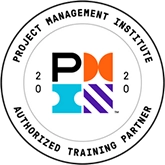The Morning After: How to Make Training Stick After the Event
Why Praise Doesn’t Work
 As a manager, I handed out praise like candy to my employees. I thought it was the perfect way to make them feel better about themselves and make them want to work harder. Imagine my surprise when people’s responses didn’t match my expectations. I got no thanks for my candy handouts. In fact, most people seemed embarrassed and even a little suspicious by my praise.
As a manager, I handed out praise like candy to my employees. I thought it was the perfect way to make them feel better about themselves and make them want to work harder. Imagine my surprise when people’s responses didn’t match my expectations. I got no thanks for my candy handouts. In fact, most people seemed embarrassed and even a little suspicious by my praise.
Why? What was I doing wrong? Isn’t praise a good thing? Don’t people like to receive a pat on the back? Well, it turns out, they do, but it isn’t praise they’re looking for. They’re looking for something much more specific and meaningful. They’re looking for positive feedback, which is quite different from praise.
Praise is often experienced by the receiver as a negative thing: people can feel uncomfortable, skeptical, or even defensive. Heap praise on someone and he or she very well could be thinking:
“This is really embarrassing. I never know what to say in return.”
Or;
“I wonder what you want from me now.”
What is Praise?
Praise is a vague statement that makes a positive judgment about a person, but contains very little information or any real meaning. Example: “You’re the best team member I have.” This statement is loaded with judgment, which can make us doubtful or even distrustful. There is no real information contained in the message, so there is nothing to grab onto as a way of building motivational steam.
Give Positive Feedback Instead
 Positive feedback, on the other hand, is a specific, non-judgmental statement about a person that contains concrete and meaningful information. Example:“You ran that team meeting really well: you encouraged open discussion, stuck to the agenda, and ended on time.” There is no judgment here, only a statement of fact. The message has some meat to it: the person knows exactly what he or she has done (and likely will do in the future). There should be no need for the receiver to wonder about ulterior motives. There should be no embarrassment by the receiver, unless the person is not used to receiving such feedback and doesn’t know how to respond. If so, tell the receiver that a simple “Thank you” is all that’s required.
Positive feedback, on the other hand, is a specific, non-judgmental statement about a person that contains concrete and meaningful information. Example:“You ran that team meeting really well: you encouraged open discussion, stuck to the agenda, and ended on time.” There is no judgment here, only a statement of fact. The message has some meat to it: the person knows exactly what he or she has done (and likely will do in the future). There should be no need for the receiver to wonder about ulterior motives. There should be no embarrassment by the receiver, unless the person is not used to receiving such feedback and doesn’t know how to respond. If so, tell the receiver that a simple “Thank you” is all that’s required.
So, put away the candy handouts and give positive feedback instead. Give it soon and often. Make it specific and concrete. Then watch what happens.
About the Author
Casey Mitchell, Trainer and Consultant for Corporate Education Group, is Founder and Principal of Waybridge Associates, Inc., a consulting practice devoted to helping people achieve peak performance. Her primary focus is on management learning and development. Casey works with new managers who want to make a successful transition, and with existing managers who want to move into leadership roles. She has eighteen years experience in the training field and a wealth of management experience, which helps her relate to her clients’ needs. Prior to founding Waybridge Associates, Casey was Human Resource Development Manager at Marshalls Department Stores.
For more information on this topic, as well as how Corporate Education Group can help power your organization’s performance, contact us via email or call 1.800.288.7246 (US only) or +1.978.649.8200. You can also use our Information Request Form!


- ©2025 Corporate Education Group, operated by CEG Operating Company, LLC. All Rights Reserved.
Privacy Policy | Terms and Conditions - Corporate Education GroupSM and Learning That Powers PerformanceSM are service marks of Corporate Education Group, Inc., PMI®, PMP®, CAPM®, PgMP®, PMBOK®; and the PMI®; Registered Education Provider logo are registered trademarks of the Project Management Institute, Inc. CBAP® and IIBA® are registered trademarks of International Institute of Business Analysis. All other trademarks mentioned on this site are property of their respective owners. All rights reserved. CEG is an approved Authorized Partner within the Blanchard Authorized Partner Program and is licensed to market, sell, and train SLII®.
